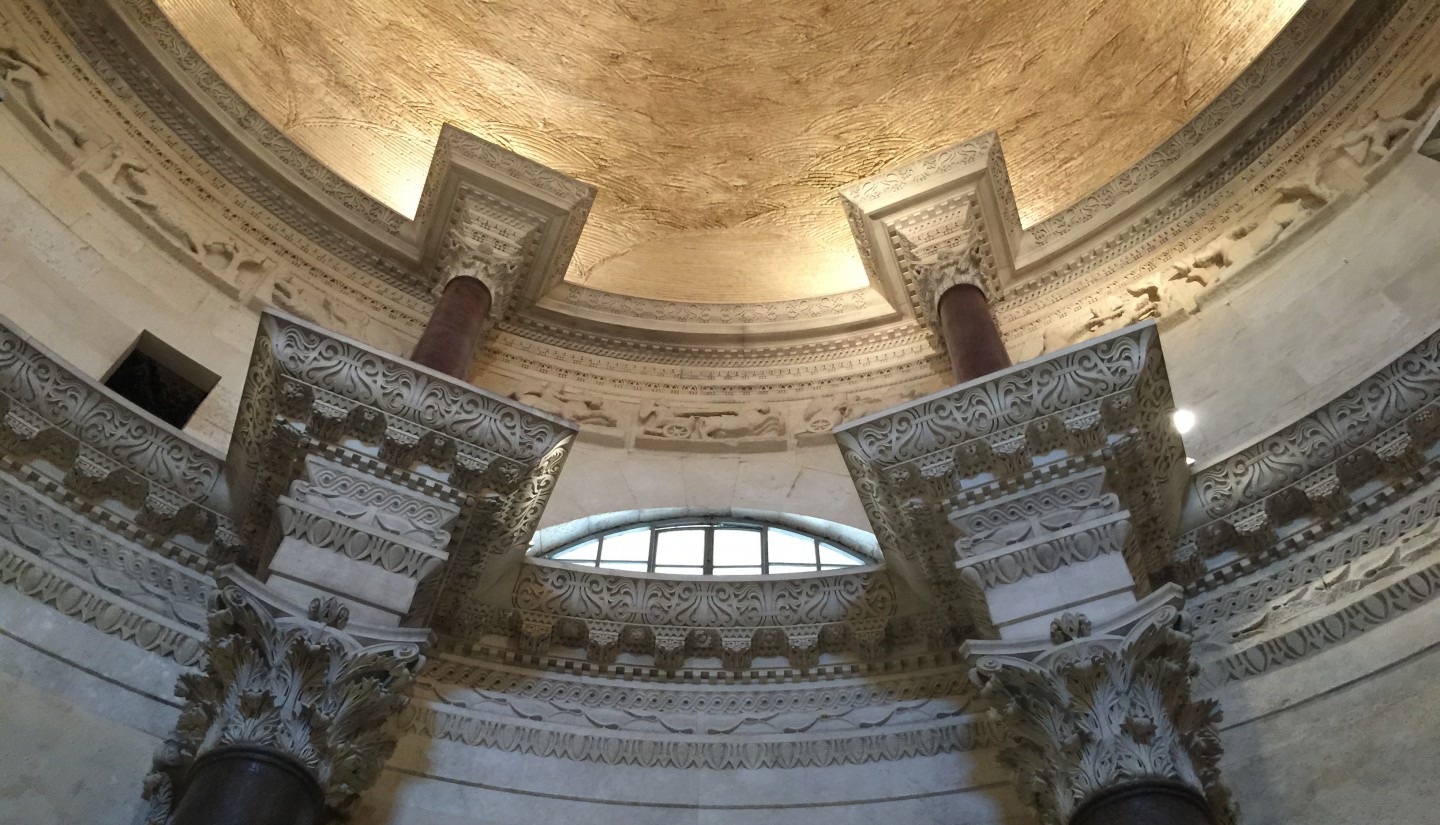Overall Impact: ******6 stars – one of best preserved/restored Roman buildings
Access ****4 star – public square open 24/7 but parking in old town hard
Atmosphere *******7 stars – almost off the scale, especially now it’s cleaned
Other **2 stars – alas, nothing Roman in heavily restored interior

Almost unbelievably, as devoted fans of Roman architecture and remains (being the sort of people who will travel many miles to look some bumps in a field and see in our mind’s eye just what that Auxiliary Fort must have looked like), we had never been to see the Roman Sites of Provence (Provincia) until this New Year.
We were, of course, blown away by what we saw. As many people reading this will know, the Maison Carée (literally, the square house – although it isn’t) in Nimes (Roman Nemausus) is arguably one of the best, if not the best, preserved Roman Temple facades. It sits in the original space of the Forum, high on its 2.8m plinth with its white marble glowing in the sunshine. The impact remains dramatic two millennia after it was built.

The Temple was dedicated c4-7AD to Gaius Caesar and Lucius Caesar, the grandsons and heirs of Augustus, who died tragically soon after. If you believe Robert Graves, after Suetonius, both were poisoned by Augustus’ wife Livia to open the way for her son and Augustus’ step-son Tiberius to become Emperor. The lettering of the dedication (“To Gaius Caesar, son of Augustus, Consul; to Lucius Caesar, son of Augustus, Consul-Designate; to the Princes of Youth”) had been removed from the facade in medieval times, but in 1758 a local scholar reconstructed it from the fixing holes left on the front frieze!
What we see today is the fruit of several reconstructions starting in Napoleonic times with the removal of accreted buildings, through to 1992 when the square around it was cleared. It inspired Thomas Jefferson’s design of the Virginian State Capitol.

The building is remarkable in that the portico forms a third of the length of the building, and there are 20 columns engaged with the wall. The frieze is exceptionally fine, decorated with rosettes and acanthus leaves.
There is nothing left inside of the sanctuary and altars that must have been there. Perhaps more could be done to give a sense of the numinous atmosphere it would once have had. There is, however, a good explanatory film which takes an unashamedly pro-Roman stance on the benefits to the local tribal leaders of joining Caesar as auxiliary cavalry and aiding him in suppressing their Gallic brothers and defeating Rome’s enemies. The film then flashes forward to show the wealthy and now thoroughly Romanised citizens of Nemausus worshipping the Emperor. It’s beautifully done and the re-enactors must have had a great time making it. There is a gratuitous dig at Arles for being founded by former Roman soldiers rather than by the indigenous Gallo-Romans! The master self-propagandist Julius Caesar would have been mightily impressed.
You could spend a lot of time describing the Maison Carée, but the key thing is how absolutely striking and atmospheric it is – in the sunlight (which we didn’t have much of at New Year) and especially when floodlit at night.



